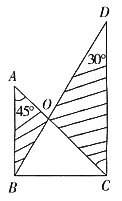问题
多项选择题
某施工单位承建了一段18km的新建高速公路,其中K0+000~K4+500段为填方路段,原地面横坡平缓,路基高度为3m,填料为细粉质砂土;K44.500~K104.500段为半挖半填路段,原地面坡度1:4.5;K10+500~K174-200段为低填方路段,路基高度为1m,填料为细粉质砂土;K174-200~K174-800填方路段,填料为土石混合料,土石混合料中石料含量超过80%,K17+800~终点为挖方路段,地表约为0.5m厚黏土,下为Ⅲ级岩石,基本不含水分,本路段有高压线反复跨越公路。
K10+500~K17+200段,应通过取土试验确定细粉质砂土的()。
A.最小强度
B.最大粒径
C.最大强度
D.最小粒径
E.弯沉值
答案
参考答案:A, B


